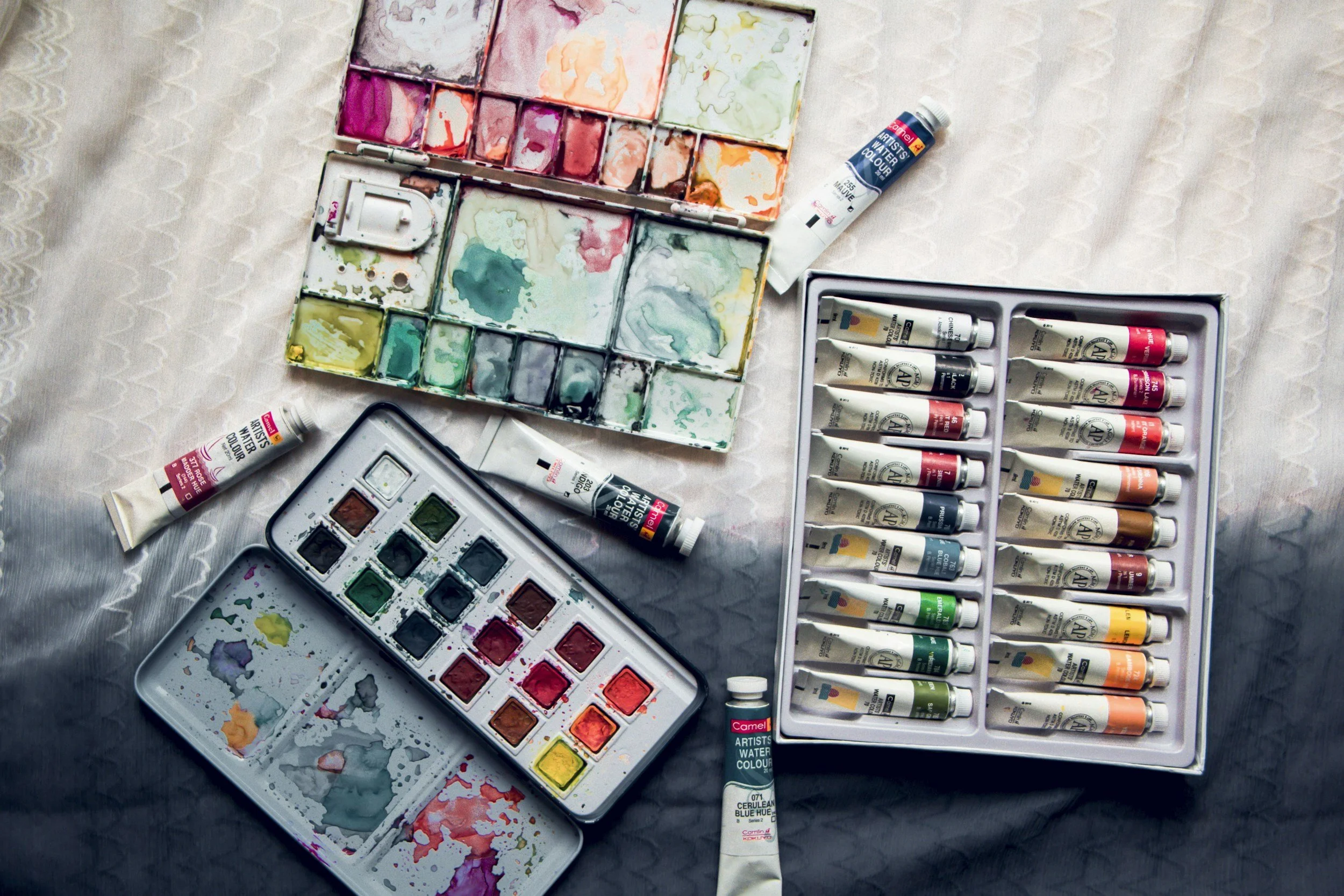Art Therapy Services
Art therapy isn’t about being “good” at art — it’s about what unfolds during the creative process. I’m not here to interpret your artwork or tell you what to make, but to support you in exploring what arises as you engage with it: the thoughts, emotions, memories, and personal insights that surface through creation. Together, we’ll use the art as a pathway to deeper self-awareness, healing, and personal growth.
While art-making is often part of a session, the focus isn’t always on the final piece. Sometimes it’s about the process itself — the feel of the materials, the act of creating, or the space to express without words. At times, other therapeutic approaches may be integrated, and you may not make art at all. Art therapy is person-centred, which means the direction of each session is shaped by your individual needs, experiences, and pace.
I offer individual art therapy sessions for adults, young people and children;
Clinic sessions available at Open Avenues Psychology in Luddenham, NSW
Telehealth sessions available
Community sessions available (in your home or at school) within Blue Mountains and Penrith area
Fee structure: $193.99 per hour.
Sessions lasts between 45 min - 60 min with an additional 30 min for preparation/clean-up/note taking.
NDIS clients are welcome

Art Therapy for children
Unlike traditional talk therapies, art therapy offers children a non-verbal and creative way to express themselves — especially when words are hard to find. Through drawing, painting, sculpting, or exploring a range of sensory materials, children can process emotions, build self-regulation skills, and make sense of their experiences at their own pace.
For children with trauma, art can offer a safe and contained way to express overwhelming feelings or memories without having to explain them directly.
For those with autism, art therapy provides structure and predictability, while also allowing space for imaginative play and sensory exploration. It can support communication, emotional expression, and social connection in ways that feel safe and natural.
Children with ADHD may benefit from the focus, movement, and tactile experiences involved in art-making. The creative process can help improve attention, reduce impulsivity, and offer a healthy outlet for energy and emotion.
Each session is tailored to the child’s individual needs. Sometimes we create a finished artwork; other times, it’s about exploring materials, playing, or engaging in a sensory experience. Art therapy meets children where they are — helping them feel seen, heard, and supported.
What happens in a session?
Individualised and person-centred therapy
Each session is individualised, and what a session looks like greatly depends on the person in therapy, their age and what they wish to get out of therapy. A child-led session for a child with ADHD who struggles with sustained attention will need a different approach to a young adult who suffers from anxiety. However, sessions do have some similarities. Below is a general guide to show you what a session could look like:
Before the first session:
Before we officially begin therapy, I will meet up with you for a conversation about the reason you seek therapy (or seek therapy for your child), to explain a little about art therapy and what you can expect and to answer any questions you might have. You can then determine if art therapy with me is the right fit for you or your child.
Beginning of session:
Each session will begin with a check-in. Sometimes this will be with a mindful activity, sometimes it will be with psychoeducation and sometimes it will simply be a chat about the week and what has happended since last session.
Middle of the session.
This is where the art-making comes into play. Again, the kind of art we make will greatly vary, and depends on who you are and what you need to work through. I will either use a top-down or bottom-up appraoch. From experience, I have learned that children generally work best with a bottom-up approach, in which I let the child decide the materials they wish to work with as well as what they would like to make. A top-down approach can be a good choice when someone is suffering from anxiety. In a top-down model, I will give art directives - for instance: “use any materials you like to create an artwork that have positive meaning to you”. Or it can be more directive - for instance: “use pencils and coloured markers to create an artwork of a space that is peaceful to you”.
During the art-making, I will be guided by you or your child. Sometimes this time is spent quietly creating, sometimes it will involve conversation. I will sometimes create art along-side of you or your child.
No prior knowledge or art experience is nessecary to gain the benefits of creating art in sessions.
End of session.
This is when we will explore the meaning of the art you have created. Sometimes our conversation will be about the finished artwork and sometimes it will be about how it felt to create art. Sometimes this section (the discussion of the art or the process of creating art) will be embedded in the main part of the session, and we will talk about the art as it is being created. I find that this often happens when working with children.
